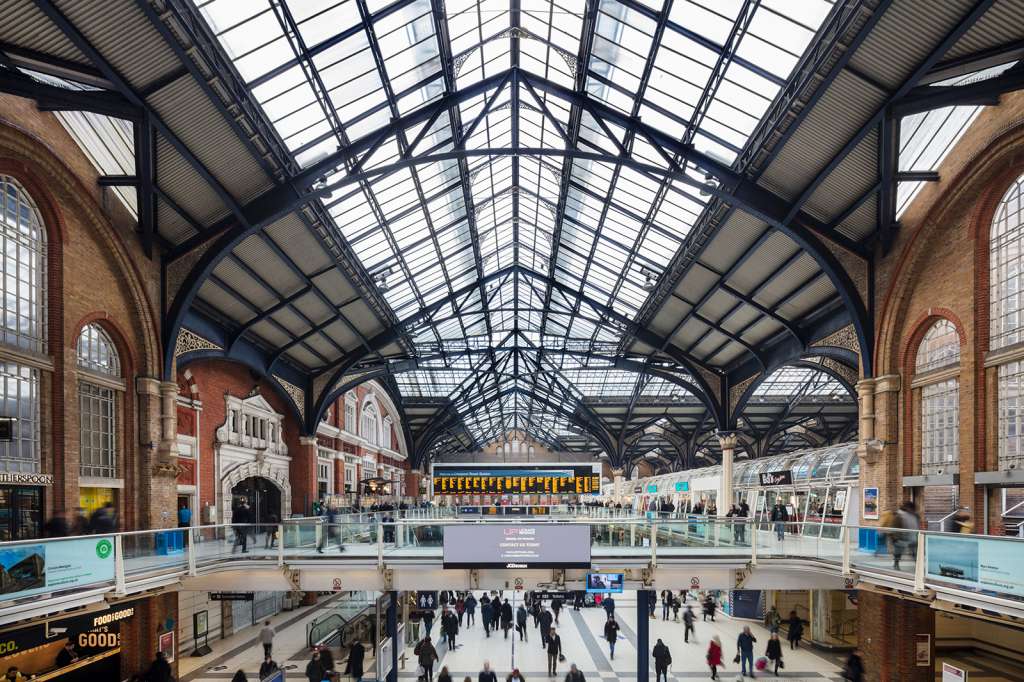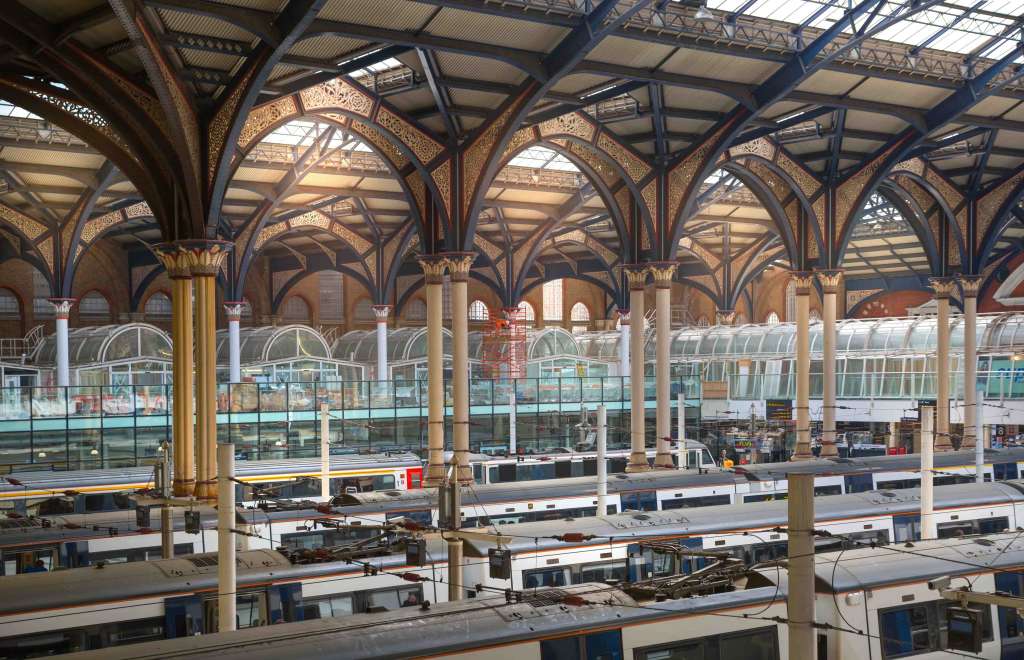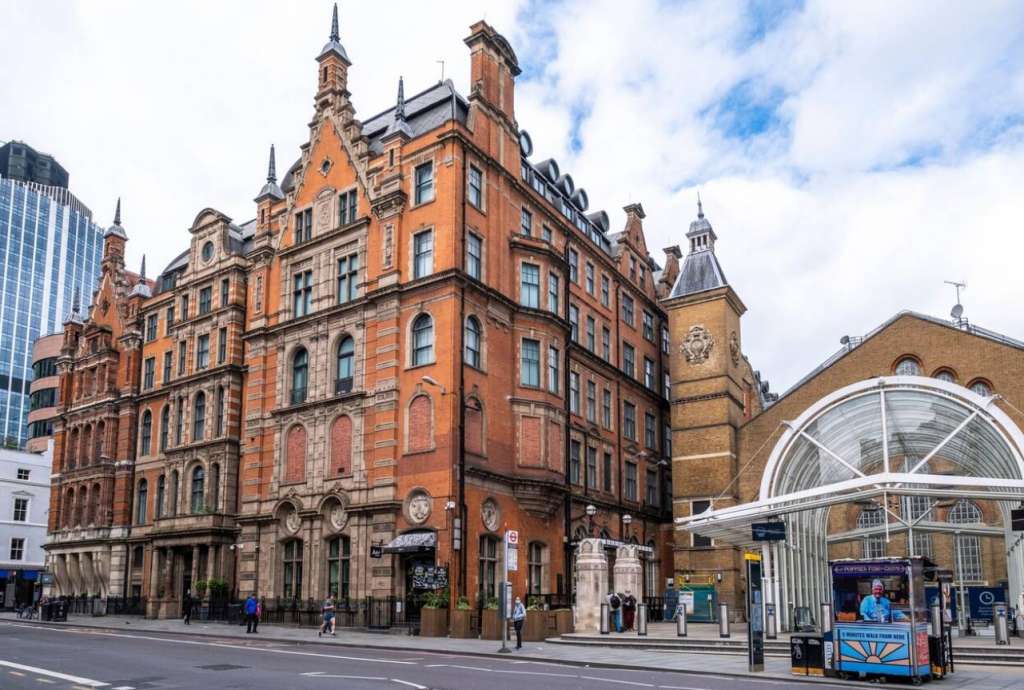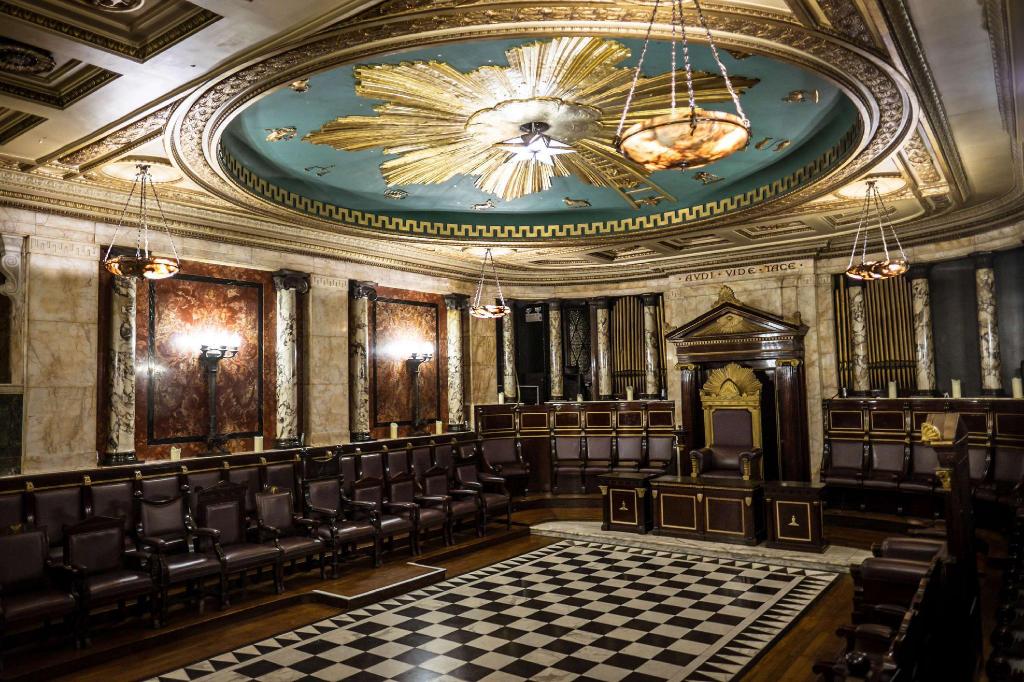PRESS RELEASE: SAVE welcomes major listing upgrades at Liverpool Street Station
Protection strengthened to recognise buildings’ special significance
December 14th 2022
SAVE Britain’s Heritage welcomes the listing upgrades for Liverpool Street Station and its hotel which have been announced by the government after a major reassessment by Historic England.
The decision follows urgent representations from SAVE Britain’s Heritage, the Victorian Society and the C20th Society that the buildings needed greater protection in the face of a threat by Sellar Property Group to build a 16-storey office tower over the station and hotel.
Designed by Swiss architect Herzog & de Meuron, these would see the demolition of the station’s magnificent concourse and pair of brick tower entrances on Liverpool Street and Bishopsgate. Large steel pillars would be cut through the station concourse and the Great Eastern Hotel, blocking famous views along the exceptionally straight trainshed and substantially altering the hotel’s remarkably well-preserved and sumptuous interiors.
The plans sparked immediate controversy across the heritage sector with Historic England, the government’s national heritage advisor, condemning the “oversized and insensitive” scheme as “fundamentally misconceived”.
Campaigners including SAVE Britain’s Heritage are gearing up to fight the proposals in a reprise of a seminal conservation battle in the 1970s which saw the station’s planned demolition defeated by a coalition including SAVE. Instead an influential conservation-led approach was approved.
Historic England wrote in its listing assessment: “The Liverpool Street Station remodelling was the most significant and ambitious scheme of its type in the era, significantly shaped by the conservation movement that coalesced around the LISSCA [Liverpool Street Station Campaign] chaired by John Betjeman from 1974.
“This galvanised opposition to British Rail’s redevelopment plans and ultimately achieved significant concessions. In historic terms the station as remodelled embodies a key point in the development of late-20th-century architecture in which historicism and contextual sensitivity came to the fore; it is arguably the most important and expressive example of the period of this development and has strong claims to special interest by virtue of this.”
And of the hotel, Historic England wrote: “Bearing in mind the quality of the exterior and the notable and extensive series of reception rooms which have retained the great majority of their original appearance, the former Great Eastern Hotel clearly reflects the qualities of being a particularly important building which has more than special interest and therefore merits being upgraded to Grade II*.”
Historic England’s reappraisal of the buildings’ listing designations – which had not been updated since 1983 – resulted this month in:
:: The Grade II listing description for the station itself enriched and expanded to include the sensitive and scholarly 1985-92 extension to the elegant, trussed-roof Victorian concourse.
:: The former Great Eastern Hotel on the corner of Liverpool Street and Bishopsgate – an integral part of the original station development – upgraded from Grade II to Grade II* in recognition of its nationally significant architecture, lavish interiors and relationship with the station.
Henrietta Billings, director of SAVE Britain’s Heritage, says: “We welcome the expansion and upgrading of Liverpool Street’s listing.
“It is absolutely right that the significance of the station’s magnificent transept concourse should be recognised, along with the wonderful interiors of the former Great Eastern Hotel – including its two masonic temples.
“The concourse’s reconstruction in 1985-92 was carefully designed to match the original Victorian train sheds and this conservation-led approach has set the tone for other major retail terminus restoration projects.”
History
Liverpool Street Station was originally built in 1873-75 for the Great Eastern Railway by chief engineer Edward Wilson. With a novel L-shaped layout and twin naves flanked by vaulted aisles, it is the City’s biggest rail terminus and one of London’s busiest.
Dubbed the Gateway to East Anglia by The Times in 1920, it has been used by generations of commuters as well as holidaymakers heading for the coast. It was also the point of arrival for refugees fleeing Nazi persecution via the port of Harwich. The station is particularly associated with the Kindertransport evacuations of approximately 10,000 unaccompanied Jewish children, a fact commemorated in a sculpture outside the station’s Liverpool Street entrance.
The station’s listing description reflects both its historical and architectural importance. Historic England said: “The station has historic significance as a key staging post in Victorian railway architecture at a point of transition from ambitious new designs in the mid-19th-century, towards a more standardised way of building by the end of the century.”
In the 1970s, changing demands led to plans for the complete demolition and rebuilding of the station and its underused neighbour, Broad Street, with a “stridently modernist” design by architects Fitzroy Robinson.
The plans were defeated at a public inquiry by a coalition of groups including the Victorian Society and SAVE Britain’s Heritage. BR took the major infrastructure project in-house and its chief architect Nick Derbyshire designed what Historic England called a “full-blooded historicist” concourse matching the original trainshed.
It proved highly influential, with Historic England describing it as a “singular example” and a “dramatic reflection of the shift in the way the redevelopment of Victorian buildings was approached in this period”.
This month’s listing announcement also includes the former Great Eastern Hotel (now the Andaz) which contains two masonic temples – one Egyptian in style, the other Grecian – and numerous other exquisitely decorated rooms, as well as a Victorian taxi ramp running through the hotel down to the station.
The station and its hotel are the last such pairing in the City. The editors of The Buildings of England said it “proves to have the finest surviving interiors of any of the London station hotels” aside from St Pancras, creating a “compelling case” for Grade II* listing.
SAVE believes the buildings play an important part in the townscape of this fragile part of the City, providing “national significance and clear group value”.
The City Corporation said the ensemble lay “at the heart of the newly defined [Bishopsgate] conservation area and make a pivotal contribution to this historically important area”.
ENDS
Notes to editors:
1. For more information contact Elizabeth Hopkirk, editorial and communications manager, on 020 7253 3500 or elizabeth.hopkirk@savebritainsheritage.org
2. SAVE director Henrietta Billings told the Evening Standard in November: “Liverpool Street station was the centre of a huge conservation battle in the 1970s and 50 years later we find ourselves potentially facing another one. We remain deeply concerned about the impact that the redevelopment plans and 16-storey tower would have on the listed station buildings and former Great Eastern Hotel, as well as the wider conservation area which is designed to protect the City from exactly this type of overwhelming development. Sellars claim public benefits in terms of station upgrades to justify the proposals – but these appear to us to be minor compared to the massive impact that the proposed office block would have on the special character of these buildings and this part of the City. If the proposals are submitted in their current form, we will vigorously oppose them.”
3. Read Historic England’s listing descriptions for Liverpool Street Station and the former Great Eastern Hotel.
4. Historic England’s press release on the proposed redevelopment is here.
5. The Victorian Society has launched a fundraising campaign to fight the demolition proposals. Donate here. The society’s president Griff Rhys Jones called the proposals “grotesque”.
6. Sellars are no strangers to controversial development around historic railway termini, having built the 72-storey Shard over London Bridge in 2013 and the 18-storey “Cube” over Paddington which us currently under construction. The latter was subject to a major legal challenge by SAVE in 2016 against the demolition of a fine unlisted Edwardian post office. We won a landmark judgement against the government at the Court of Appeal.
7. SAVE Britain’s Heritage is an independent voice in conservation that fights for threatened historic buildings and sustainable reuses. We stand apart from other organisations by bringing together architects, engineers, planners and investors to offer viable alternative proposals. Where necessary, and with expert advice, we take legal action to prevent major and needless losses.






